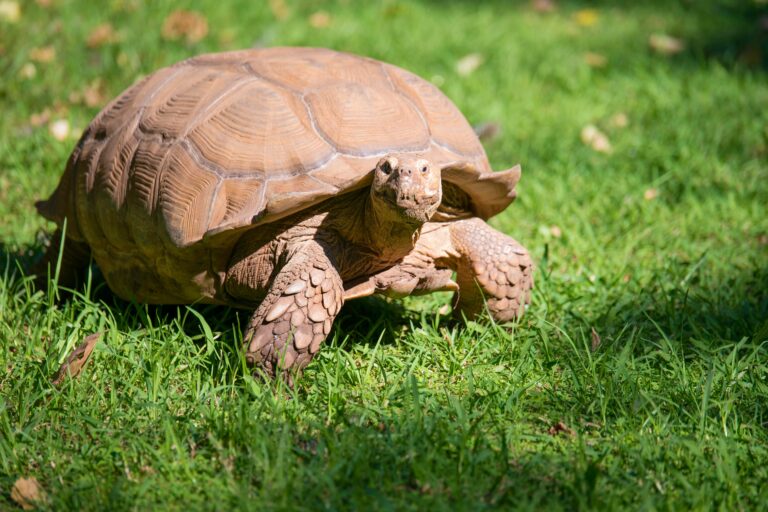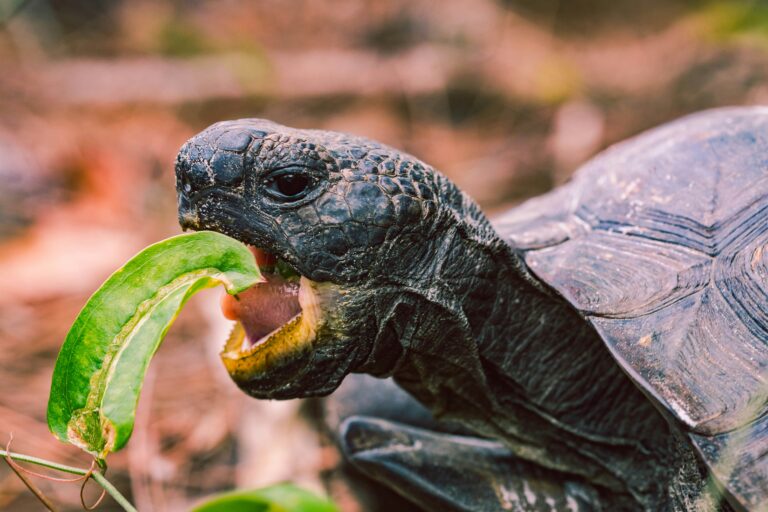How big does Russian tortoise get? 4 Growth factors

Few animals pique people’s curiosity in exotic pets quite like the Russian tortoise. Many pet fans have developed a deep affection for these reptiles due to their charming personality and attractive beauty. But a frequent query from people thinking about getting one for their family is, “How big does a Russian Tortoise get?” Come along with me as we explore the amazing world of these endearing animals and learn the mysteries around their enormous size.
Understanding the Russian Tortoise: A Short Overview
Before we get into the details of their size, let’s have a look at what distinguishes the Russian Tortoise. This species (Agrionemys horsfieldii), also known as the Horsfield’s Tortoise, is native to the dry grasslands and deserts of Central Asia, which includes Russia, Kazakhstan, Uzbekistan, and China. They’ve adapted to live in tough, arid settings, demonstrating incredible tenacity and survival instinct.
Russian tortoises are famous among reptile aficionados due to their small stature, attractive personality, and low maintenance requirements. Their diminutive height, combined with distinguishing features such as a high-domed carapace and vivid yellow and olive-green patterns, adds to their allure.

It’s All About Size: How Big Can They Get?
Let’s now address the crucial query: What is the maximum size of a Russian tortoise? Comprehending the growth potential of these organisms is essential to ensuring appropriate care and housing.
When fully mature, Russian tortoises typically measure between 6 and 10 inches (15 and 25 cm) in length. Nonetheless, several variables, including heredity, nutrition, surroundings, and general health, affect their size.
Factors Affecting Development
Genetics: The size of Russian tortoises is mostly determined by genetic predispositions, much like any other living thing. Although some people may naturally grow larger than others, most people fall into the previously indicated size range.
Nutrition: For Russian tortoises to grow healthily, a balanced diet is necessary. They mostly eat a range of grasses, weeds, flowers, and even fruits in the wild. To prevent nutritional deficits and guarantee normal growth, their diet as captive pets should consist of leafy greens, vegetables, and occasionally fruits, supplemented with calcium and vitamin D3.

Giving The Best Possible Care:
Paying close attention to the unique requirements of a Russian Tortoise is necessary to ensure its health and well-being. The following are crucial pointers for giving the best care possible:
1. Enclosure: Make sure there is a roomy enclosure with lots of space for walking around and sunbathing. In addition to providing extra enrichment, outdoor enclosures or supervised outside time can expose children to natural sunlight, which is necessary for the production of vitamin D3.
2. Diet: Provide a diverse diet that includes veggies (such as bell peppers, carrots, and squash), dark, leafy greens (such as dandelion, collard, and mustard greens), and occasionally fruits (such as melon, strawberries, and raspberries). Foods heavy in fat or protein should not be given because they can cause health problems.

3. Hydration: Always make sure you have access to clean, fresh water. Periodically soaking your tortoise in shallow water can help with digestion and help keep it from being dehydrated.
Enhance the environment by giving people the chance to engage in activities that come naturally, like digging, foraging, and exploring. To create a stimulating habitat, include hiding places, burrowing substrate, and climbing toys.
4. Veterinary Care: To keep an eye on your tortoise’s health and quickly treat any concerns, schedule routine check-ups with a veterinarian who is knowledgeable about reptiles. Keep an eye out for symptoms of disease, such as fatigue, appetite loss, breathing problems, or strange behaviors.
In conclusion, a variety of factors, such as genetics, nutrition, environment, and general care, affect a Russian tortoise’s size. At maturity, they usually grow to a maximum length of 6 to 10 inches (15 to 25 centimeters), though there may be individual differences. Your Russian Tortoise will flourish and live a long, healthy life by your side if you provide it with proper care, an appropriate habitat, and a balanced diet. Recall that recognizing and attending to these extraordinary species’ specific requirements is the first step in realizing their full potential.
Read More: Why is my Russian tortoise not eating?